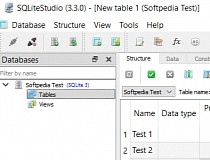

There are a couple options for SQLite GUI database mangers, including SQuirreL SQL Client and SQLiteStudio. The database holds your data, but you need a client to see and interact with it. db files that you can store anywhere on your computer. The databases you work with in SQLite exist in. SQLite is a little different from other implementations of SQL because it operates on regular plain old local files and does not require a server connection, unlike PostgreSQL and MySQL. We’re going to use SQLite in this tutorial because getting set up requires less work. Different implementations (such as PostgreSQL and MySQL) have their own higher level specialized functions, but the all handle the same basic operations covered in this tutorial.

There are different implementations of SQL-one implementation is SQLite. SQL (Structured Query Language) is a programming language for interacting with data in a relational database. In a relational database, the data is contained in different tables. There are different kinds of databases-one kind is a relational database. If you don’t have a chance to check out Keith’s post, here are the short answers to a couple questions that you may be asking yourself: What is a database?Ī database is a collection of data that is structured to allow for manipulation. Before continuing here, I highly recommend reading Keith’s post Databases for Smart People Who Are Scared of Databases for a helpful conceptual overview of the what and why of databases. This tutorial is based on the recent SQL workshop hosted by the Digital Fellows, and is designed to get you started using relational databases. Image by Willow Brugh (database skillshare relational), via Wikimedia Commons The Basics


 0 kommentar(er)
0 kommentar(er)
